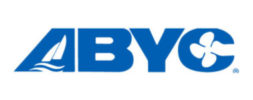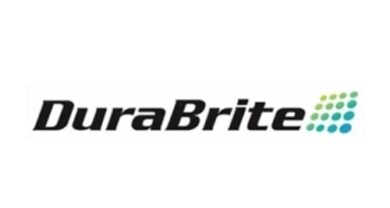Future bright for inboard and sterndrive markets
The number of gas-powered sterndrive and inboard models available is likely to shrink while diesel options are growing. Despite this trend, gas engines will continue to be the power of choice in the U.S. market – at least for now.
With the exception of most outboards, gasoline powered marine engines are derived from the automotive industry. In the past, all three major American manufacturers – General Motors, Ford and Chrysler – were active in the marine engine field. Today, the primary source of engines is General Motors.
For 40 years after World War 2, the United States auto industry was centered around large, heavy cars that were powered by large displacement cast iron V8s. Low speed, high torque engines are desirable traits in heavy vehicles and boats.
Then, with government CAFÉ (Corporate Average Fuel Economy) standards, the necessity for smaller lighter vehicles was mandated. This meant new smaller engines with lightweight alloy construction, not the type of engines that work well in boats.
While the large V8 has not disappeared from the scene, in many instances it has been relegated to trucks and large SUV’s.
GM’s cast-iron V6, at 190 hp, sees considerable amount of automotive use, but the inline 3.0 liter 4 cylinder engine (135 hp) is currently relegated to fork lift and auxiliary power generating applications and is not a high volume production engine. There hasn’t been a marine sterndrive engine between 135 hp and 190 hp for many years. The primary reason is the lack of a suitable automotive block that can be marinized in a cost effective way.
In weight saving measures, new engines often employ metals in their construction that are not compatible with a saltwater marine environment. So far, General Motors has stayed with all cast iron production in their big block V8s, which provides a satisfactory service life in a marine environment without the need for closed cooling. However, low production volume is going to keep the price high. Even if closed cooling becomes mandatory on all marine engines – this may be necessary to meet impending emission regulations – it is doubtful that any other major companies will re-enter the marine engine field primarily because the production volume isn’t sufficient to justify the cost.
Gas power, both inboards and sterndrives, will continue to be the boat power of choice. However, emission controls and lack of production volume are likely to increase prices and reduce the available choices, particularly at the low end of the horsepower scale.
Diesel options growing
An alternative to gas power is diesel, and the options are greater today than they have ever been. Diesel has been popular in Europe primarily because of the price difference between gas and diesel fuel. Diesel fuel is less expensive and contains approximately 11 percent more BTU’s (British Thermal Units) than gasoline. This means that a gallon of diesel will do more work at a lower cost than a gallon of gas.
Some of the disadvantages of diesel power, namely noise, weight, smell and smoke, have been largely eliminated. We have the automotive industry to thank for this, primarily in Europe, where the diesel-powered automobile is a common sight. In addition, our own EPA is slapping controls on diesel emissions beginning in 2006.
Modern, high-speed diesel engines are clean burning, light weight and suitable for planing hulls in everything from 17 footers on up. The major remaining disadvantage is purchase price. Diesel engines remain considerably more costly – usually double or more – than gas engines. While their life expectancy is considerably longer and operating expense is less, it takes a lot of time and a lot of fuel to make up the difference.
The primary reason for the long life of a diesel engine is that it is stoutly build to withstand the compression forces necessary to promote combustion. In fact, many of the improvements of the past few years are directly attributable to better and stronger materials.
In addition, while many of the new engines turn much faster than diesels of a few years ago, diesel engines still don’t reach the rpm levels of gas engines. Slower turning engines means less friction and less wear and that equates to a longer engine life.
Also, gasoline is a solvent that washes oil off of cylinder walls and dilutes oil in the crankcase accelerating wear. Diesel fuel has lubricating properties that reduce cylinder wall wear.
The biggest benefit in reducing emissions has come with the development of the common rail injection system. Just as smog control choked automobiles benefited from the use of electronic engine management systems, electronic controls are now cleaning up and improving the performance of diesels. Prior to electronic controls, diesels relied on mechanical injection pumps and mechanical controls that are far less flexible in managing fuel.
Common rail injection systems have been employed on automotive engines for several years. These automotive systems are relatively low pressure systems where fuel rail pressures are in the 30 psi range. High pressures are not necessary to get fuel into the automotive engine because the fuel is injected into the intake manifold where there is generally a vacuum. [Super or turbocharged engines excepted].
Diesel engines rely on direct injection where the fuel is injected directly into the combustion chamber. Compression ratios vary anywhere between 15 to 22:1 and compression pressures can exceed 450 psi. It is the heat of compression, not a spark from a sparkplug, that ignites the fuel.
To achieve the necessary atomization of fuel, fuel rail pressures in the 20,000 psi range, or higher, are required. The greater the fuel atomization, the cleaner the burn becomes and that lowers the emissions. The common rail supplies a uniformly high amount of pressure to the injectors at each cylinder, and electronics control when and how often the injector forces fuel into the combustion chamber. There may be as many as three different fuel injections on each power stroke of the piston.
The high injection pressures and the more precise timing of fuel injection permits the modern diesel engine to start idle and accelerate without the clouds of black smoke that accompanies the cold starts and acceleration of previous designs. Another advantage is that the noise level is reduced and the ubiquitous diesel rattle is eliminated.
Typical of today’s high speed diesel engines are the 115 hp MerCruiser 4-cylinder diesel sterndrive, based on an Isuzu truck engine, that turns up to 4400 rpm, and the new 5-cylinder, 150 hp Volvo – initially intended for automotive use – that cranks along at 4000 rpm. The MerCruiser tips the scales at 653 pounds, 18 pounds. more than the 3.0 liter gas engine. The 150 hp Volvo diesel comes in at 680 pounds. or 0.22 horsepower per pound. The 190 hp Volvo gas V6 weighs 885 pounds and develops 0.21 horsepower per pound. The weight penalty for diesel power no longer exists.
Large diesels’ horsepower growing
There is a great deal of activity in the larger diesel engine field, those intended primarily for direct or V-drive inboard powerboats. While engine weights aren’t dropping, horsepower is climbing. The 500 hp Yanmar weighs 1815 pounds yielding 0.28 horsepower per pound and that is matched by the 450 hp, 6-cylinder MAN at 1605 pounds. For those who like the idea of high horsepower and light weight, MarineDiesel marinizes the GM 6.5-liter diesel engine with available horsepower up to 400 or 0.42 horsepower per pound. This engine is nearly a bolt in replacement for the big block gas V-8s. Caterpillar and Cummins MerCruiser have new high horsepower diesels available too.
Sterndrive developers haven’t been sitting idle either. The most prominent new drives are from Volvo in the form of the DP and the DPR. With the exception of gear ratio, these are basically the same drive from the lower gearcase up. Both were designed to handle the torque of Volvos new D6, a 300-hp, 5.5-liter inline six. The DPR is for high performance applications in boats intended for speeds over 50 mph. The Volvo DP and DPR drives are brand new designs that are bigger and heavier than either the AQ or SX drives that have been used in previous Volvo sterndrive packages.
Because of the low rpm torque that diesel engines develop, Cummins MerCruiser has limited the use of the Alpha drive to their smallest (115 hp) engine only. All the others use a Bravo drive with the “X” designation. The “X” indicates a beefed up drive with stronger gears and bearings. Konrad, an independent sterndrive manufacturer is making waves with stronger and faster drives too.
The future of marine power looks good with large gas powered engines available for the foreseeable future. Displacement and horsepower continues to rise. On the diesel side, new entries are lighter in weight and more powerful and sterndrives are getting bigger and stronger too. — Jim Barron




